We assume that since everyday items like shampoo, soap and shower curtains are for general sale that they’re probably not toxic for us. But in the US, less than 1% of consumer products are tested for human safety. These items don’t come with a giant “toxic for humans – do not use” warning, but maybe they should. In 2016, the Project TENDR released a national Call To Action to drastically reduce exposure to chemicals and pollutants. They emphasized many of the chemicals found in everyday products can result in neurodevelopmental disorders, including autism and attention-deficit disorders. To minimise your exposure, avoid these 10 toxic things found in your home.

1. Air Fresheners
The first on our list of toxic things found in your home are air fresheners. The US leads the world in air freshener use with 27% of the global market. And 72.8 % of Americans use air fresheners once a week. But all of these sweet smells come at a cost to your health and the environment.
Toxicology Report
Dangerous Chemicals: Phthalates, formaldehyde, limonene, ethanol, benzene, toluene, and xylene.
Impacts: Respiratory problems, mucosal symptoms, migraines, skin problems, asthma, neurological problems, cognitive problems, gastrointestinal problems, cardiovascular problems, musculoskeletal problems and immune system problems.
Air fresheners emit over 100 different chemicals, but you wouldn’t know it since less than 10% of all volatile ingredients are listed on product labels. A study by the University at Berkeley found that air fresheners used indoors emit levels of toxic pollutants that could lead to health risks. Most commonly, people report respiratory problems, mucosal symptoms, migraines, skin problems and asthma from exposure. “Green” or more eco-friendly air fresheners aren’t much better, reported to emit similar levels of carcinogenic pollutants.
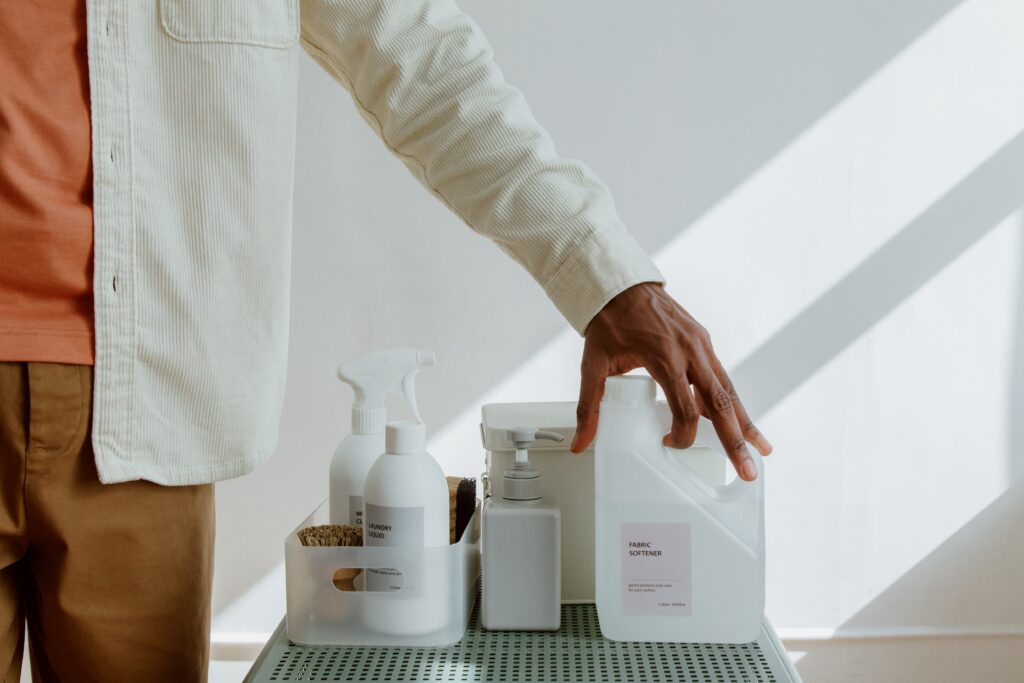
2. Fabric Softener
Next on our list of toxic things found in your home is fabric softener. Having grown up in a household that believed fabric softeners were “bad for you”, I learned to live with crunchy clothes. But it wasn’t until recently that I discovered fabric softeners weren’t just bad for you, but they’re also really bad for the environment. Fabric softeners work by coating your clothes in a layer of chemicals like quaternary ammonium salts, or “quats”.
Toxicology Report
Dangerous Chemicals: Phthalates, distearyldimonium chloride, acetaldehyde, 1,4-dioxane, methyl ethyl ketone, chloromethane, linalool, methylisothiazolinone, and glutaral.
Impacts: allergies, skin irritations such as dermatitis, difficulty breathing and potential reproductive harm, headaches, cancer, and toxic to marine life.
According to the Association of Occupational and Environmental Clinics, these chemicals are “asthmagens”. An asthmagen can cause asthma to develop in healthy people. Even fabric softeners for babies or those with sensitive skin may still contain quats. These chemicals enter the air and waterways polluting the environment and marine life. One of the best ways to reduce your exposure is by removing fabric softener from your laundry routine. Opt for a natural alternative like half a cup of white vinegar per wash if you really miss the softness.

3. Non-Stick Cookware
Non-stick might seem like a dream when it comes to washing up, saving you time scrubbing pots and pans. But when you look at the toxic chemicals you’re exposed to, they might seem like more of a nightmare. To get that slippy surface, cookware is covered in a material known as polytetrafluoroethylene (PTFE). PTFE, also known as Teflon, starts to break down and release gasses when heated to high temperatures. These gasses are highly toxic to humans, animals and the environment.
Toxicology Report
Dangerous Chemicals: Polytetrafluoroethylene (PTFE), Perfluorooctanoic Acid (PFOA) also known as C8
Impacts: ulcerative colitis, high cholesterol, pregnancy-induced hypertension, thyroid disease, testicular cancer, kidney cancer, reproductive problems, fever, shivering, sore throat, weakness and fatal to birds.
The EWG found in two to five minutes on a conventional stovetop, non-stick cookware emits toxic particles and gasses linked to pet bird deaths and an unknown number of human illnesses each year. The fumes produced from Teflon are also linked to “polymer fume fever“, which causes fever, shivering, sore throat and weakness. While it might be tempting to save some time, avoid non-stick and opt for cast iron instead.

4. Oven Cleaners
Next on our list of toxic things found in your home are oven cleaners. While oven cleaners are great at removing grease, they’re not so great for you or the environment. Oven cleaners work by breaking down grime through their high levels of alkalinity, often as high as 14. It’s this high PH level that can also cause burns or irritation if it gets on your skin. If swallowed, they can cause vomiting, burns, swelling and blisters.
Toxicology Report
Dangerous Chemicals: lye (sodium and potassium hydroxide), Ethylene glycol, polymers, butoxydiglycol, methylene chloride, petroleum distillates, pine oil
Impacts: corrosive to skin, eyes and internal organs, respiratory tract irritant, if ingested – vomiting, burns, swelling and blisters, if inhaled – shortness of breath, coughing and chest pain.
It isn’t just dangerous getting it on your skin, if inhaled it can cause shortness of breath and chest pain. Even worse, if in the eyes, it can corrode and cause ulcers. Self-cleaning features on ovens are known to be just as toxic. They release carbon monoxide and polymer fumes due to the high heat levels. In addition to being toxic for your home, oven cleaners also harm the environment. Toxic chemicals are released into the air and end up in landfills or waterways polluting the environment around it. When cleaning your oven, opt for a safer and eco-friendly solution with baking soda, water and vinegar instead.
For more sustainable cleaning check out our 5 Eco-Friendly DIY Home Cleaner Recipes
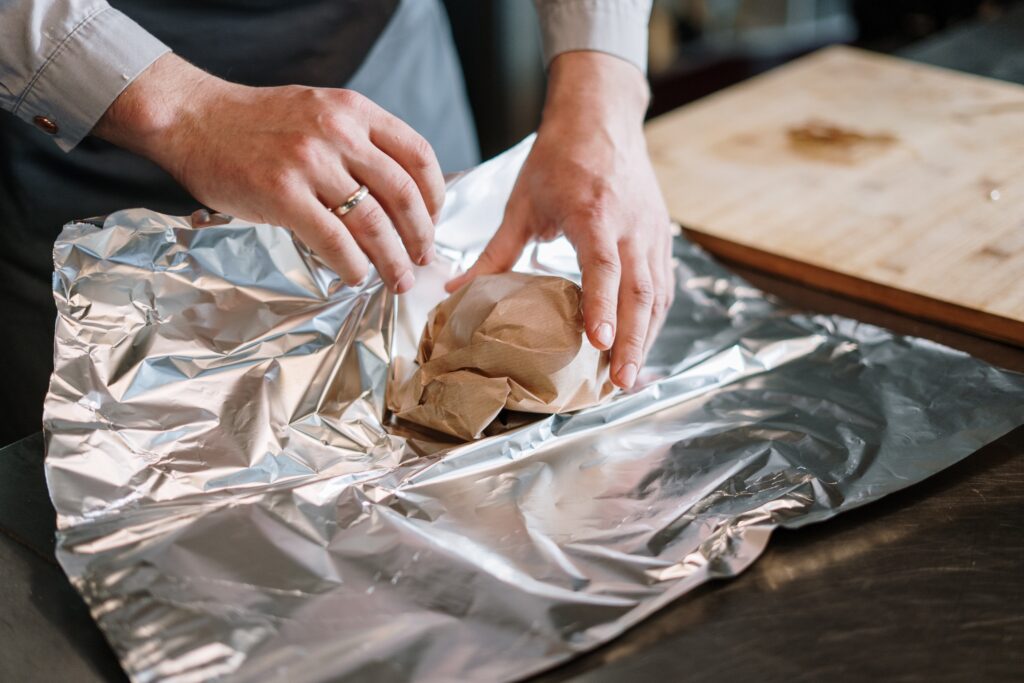
5. Aluminum Foil
Aluminum foil is much loved in the United States with 97% of Americans using aluminum foil in 2020. It’s used to line baking trays and grills, store leftovers, even polish silverware. But as useful as this material is, it might not be that safe for you to use.
Toxicology Report
Dangerous Chemicals: Aluminum
Impacts: decreases growth rate of brain cells, Alzheimer’s disease, Parkinson’s disease, dialysis encephalopathy, bone disorder
Due to its durability and ease of use, one of the most popular uses for aluminum foil is cooking food. Unbeknownst to most of the population though, aluminum foil is ok for food storage but not safe for cooking. Studies show that aluminum foil can contaminate food when it’s used for cooking. Aluminum seeps into food, some more than others, at unacceptable levels for the human body. This can be particularly harmful to those with bone diseases or renal impairments. It’s also been known to reduce the growth rate of brain cells. Avoid aluminum foil when you can, store food in glass containers and cook directly on the grill instead.
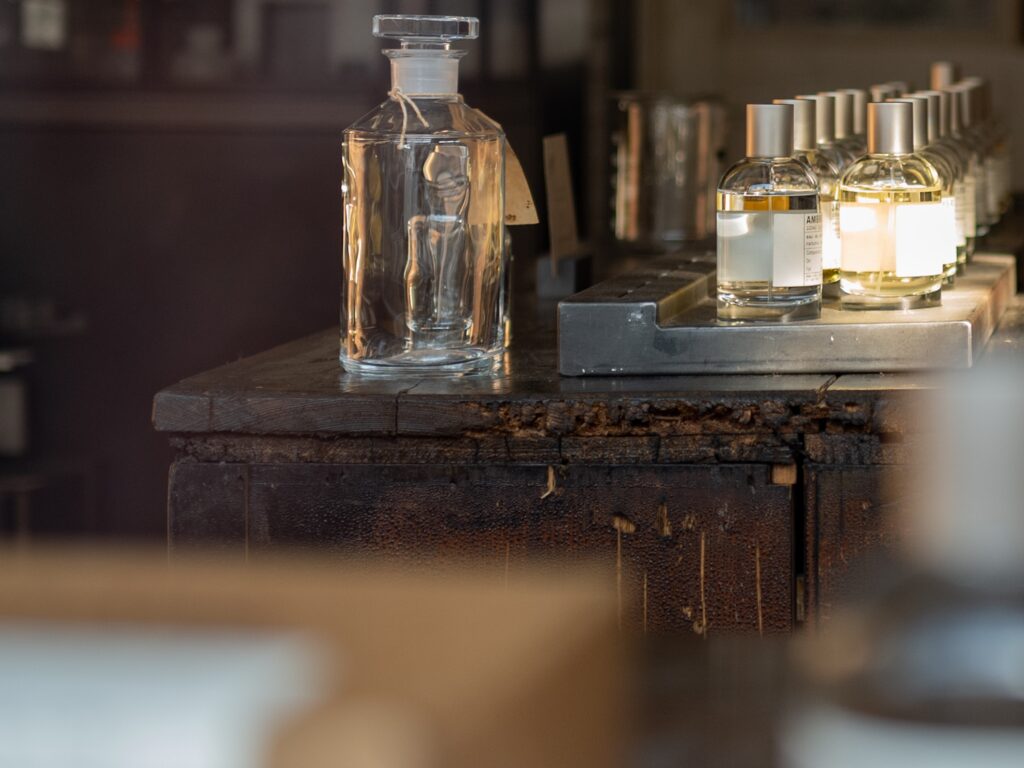
6. Perfume
Next on our list of toxic things found in your home is perfume. The global perfume industry is projected to reach 43.2 billion by 2028. In 2020 alone, over 40% of Americans bought fragrances and 1.74 million spent $500 or more on them. While perfumes are clearly popular, they also contain toxic and harmful chemicals.
Toxicology Report
Dangerous Chemicals: Benzaldehyde, camphor, ethyl acetate, benzyl acetate, linalool, acetone and methylene chloride
Impacts: dizziness, nausea, drowsiness, irritation to throat, eyes, skin, and lungs, kidney damage and headaches – when inhaled, dyschromia, allergic contact dermatitis, photosensitivity (phototoxicity and photoallergy), cancer, birth defects, and hormone disruption.
A single fragrance can contain anywhere between 50-300 different ingredients. But these ingredients are rarely listed anywhere since they’re “trade secrets”. And it’s almost impossible to make an informed decision as a consumer when the ingredients list is empty. A 2018 study found fragrance products have the highest percentage of hazardous chemicals of all personal care products tested. Fragranced products are associated with a wide range of negative health effects, like migraines, asthma attacks, respiratory difficulties, and neurological problems. Additionally, fragrances are the most common chemicals causing contact dermatitis.

7. Mattress
The global mattress industry is worth 50 billion USD in 2022, projected to grow to 72.9 billion by 2029. Foam mattresses are the second most popular type of mattress, next to spring mattresses. In recent years, foam mattresses have been found to contain toxic materials. But it goes beyond that, the EWG states that most mattresses on the market contain harmful chemicals.
Toxicology Report
Dangerous Chemicals: Volatile organic compounds (VOCs)
Impacts: headaches, nausea and dizziness, nasal irritation, allergic reactions, neurological problems, liver and kidney damage, cancer, fertility problems and miscarriage.
Most mattresses contain polyurethane foam. Polyurethane foam emits harmful chemicals called volatile organic compounds, or VOCs, that can cause respiratory irritation and other health problems. They also contain flame retardant chemicals linked to cancer, and hormone disruption and PVC that can damage developing reproductive systems.
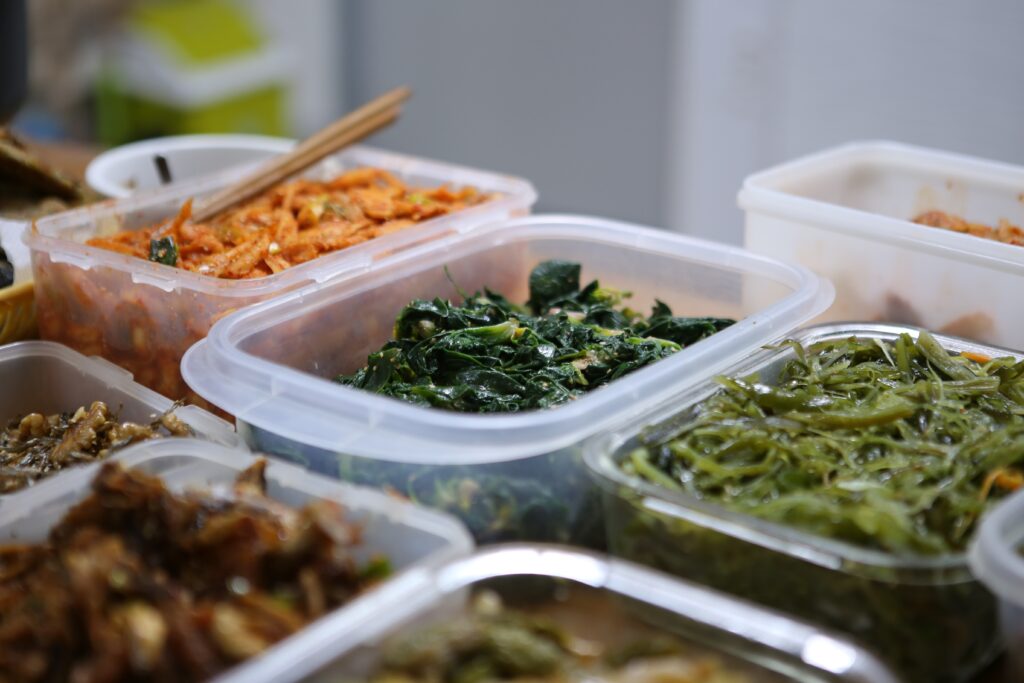
8. Plastic Food Containers
Next on our list of toxic things found in your home are plastic food containers. Popular plastic food container usage first began in 1973 when the polyethylene terephthalate, or PET, bottle was first patented. Used initially for drink bottles, plastic quickly spread as a popular container for most food and drink. By 2021, the global plastic containers market was valued at 58 USD billion.
Toxicology Report
Dangerous Chemicals: bisphenol A (BPA), bisphenol S, acetaldehyde, formaldehyde, 2,4-di-tert-butyl-phenol (2,4-dtBP) and bis(2-hydroxyethyl) terephthalate
Impacts: adverse developmental, reproductive and neurological effects, metabolic disorders such as diabetes and obesity, asthma, birth defects and cancer.
Most plastic containers are still made from Polyethylene Terephthalate, but PET is known to leak antimony. Antimony is harmful to the eyes, skin and internal organs lungs, heart, and stomach. Bisphenol A, or BPA, a common chemical used in plastic containers was recently replaced, with containers now sporting “BPA-free” labels. But these replacement chemicals, BPS and BPF have similar effects. In addition to being bad for humans, PET doesn’t easily break down. It turns into microplastics that last hundreds of years and damage marine life. When possible, avoid plastic and opt for glass containers instead.
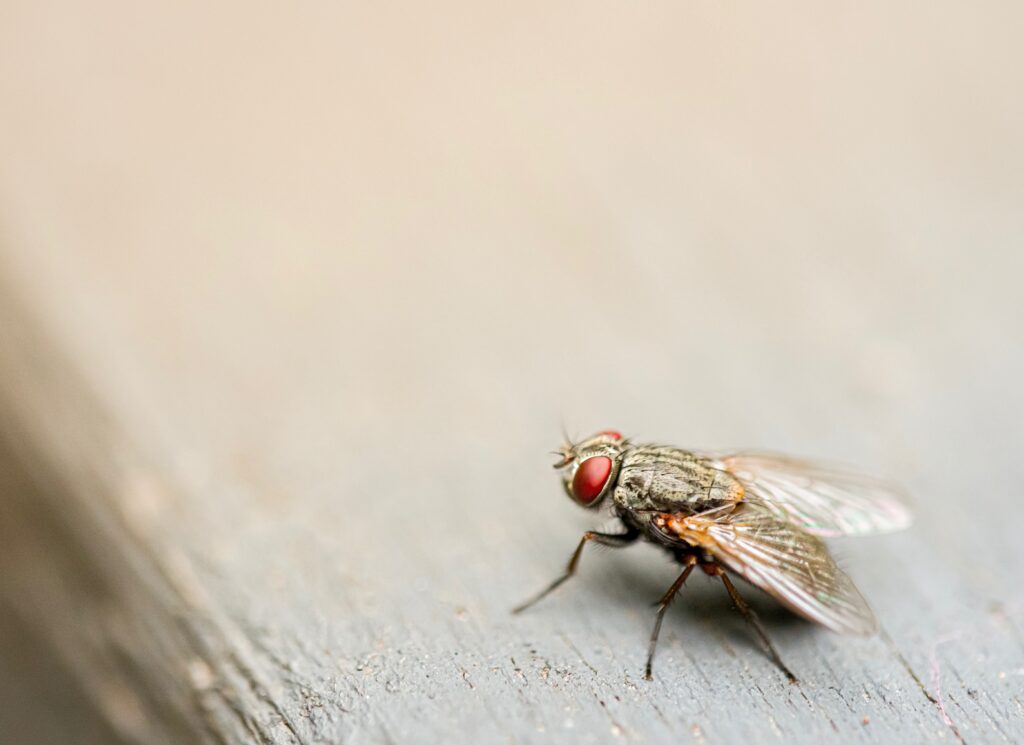
9. Bug Spray
In 2018, the global insect repellant industry was worth 3.6 billion USD and it’s on the rise. By 2020, 60% of Americans used insect repellant, with 30% using DEET based products. One of the causes for the rise in usage, is the increase in mosquito-borne diseases. Due to global warming, diseases like malaria and dengue are becoming more prevalent. There’s also been an increase in the number of bed bugs and cockroaches in recent years, growing 50% each year. Naturally, to combat more insects people are using more bug sprays.
Most bug sprays contain DEET (N,N-diethyl-m-toluamide, or N,N-diethyl-3-methylbenzamide), one of the most effective ingredients at repelling insects. But DEET has also been linked to harmful health effects. Higher concentrations of DEET have been associated with seizures and even death. While there are alternatives to DEET based products on the market, little research has been done on their safety. Most use citronella oil or lavender oil applied topically for protection. But their effectiveness is also short-lived. A safe, long-lasting insect repellent is needed and it seems we don’t have any available today.
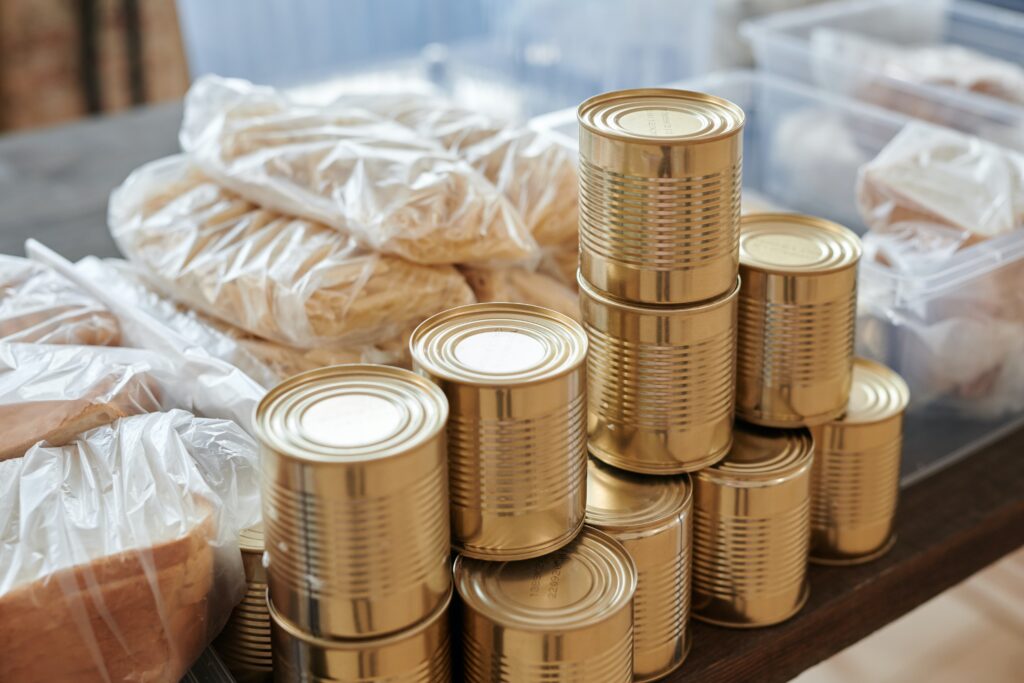
10. Canned Food
Last on our list of toxic things found in your home is canned food. In 2019, the global canned food market was worth 91.9 billion USD. North America held 39% of the global market share with over 65% of the population in the United States eating canned foods. Canned foods are extremely popular due to their convenience, affordability and availability. Canning can help preserve and extend the shelf-life of many foods. But canned food may also be contaminated with harmful chemicals.
Toxicology Report
Harmful Chemicals: Bisphenol A (BPA)
Impacts: hormone-disrupting chemical linked to male infertility, heart disease, diabetes and cancer.
Most canned food manufacturers used Bisphenol A (BPA) to line cans for years. But due to rising concerns around the health implications of BPA, they were phased out of use. However, according to a study in 2017, BPA was still in use in 38% of cans tested. BPA is widely known as a harmful chemical with links to diabetes, obesity, heart disease, and cancer. According to the Can Manufacturers Institute, alternatives to BPA are in use, but it’s still unclear how safe they are. Until the safety of alternatives is more known, try to limit or avoid canned food where possible.
Sustayn is designed to present the most useful recommendations for environmentally friendly approaches and items. We update links when possible, but note that links can be broken and subject to change.



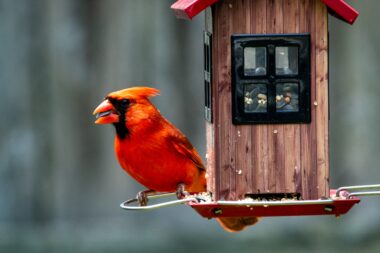


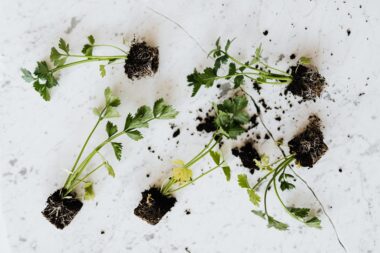


182 comments
I am very happy to read this. This is the type of manual that needs to be given and not the random misinformation that’s at the other blogs. Appreciate your sharing this best doc.
I wanted to thank you for this great read!! I definitely enjoying every little bit of it I have you bookmarked to check out new stuff you post…
This really answered my downside, thanks!
After study a few of the blog posts on your website now, and I truly like your way of blogging. I bookmarked it to my bookmark website list and will be checking back soon. Pls check out my web site as well and let me know what you think.
Very informative article.Really thank you! Keep writing.
Can someone recommend Face Strapon Dildo? Thanks xox
Hello very cool blog!! Guy .. Beautiful .. Amazing .. I’ll bookmark your blog and take the feeds also?I’m happy to seek out so many helpful info here within the put up, we want work out extra techniques on this regard, thanks for sharing. . . . . .
This is a topic that is close to my heart… Take care!Exactly where are your contact details though?Here is my blog post: clubriders.men
to sell them, of course we hundreds if not thousands of
Im obliged for the article.Thanks Again. Really Cool.
Thanks for sharing, this is a fantastic blog article.Thanks Again. Keep writing.
I truly appreciate this article post.Really thank you!
Really enjoyed this article post. Much obliged.
I appreciate you sharing this article.Really thank you! Really Great.
I truly appreciate this blog.Really looking forward to read more. Want more.
Im thankful for the article post.Much thanks again. Want more.
Thanks for the blog.Thanks Again. Really Cool.
I do believe all of the ideas you’ve offered for your post. They are very convincing and will definitely work. Still, the posts are very brief for newbies. May just you please extend them a little from subsequent time? Thanks for the post.
best male enhancement vacuum therapy for ed – ed pills online pharmacy
An interesting discussion is worth comment. I do believe that you ought to publish more about this issue, it may not be a taboo subject but generally people don’t discuss these topics. To the next! Kind regards!!
I do consider all of the concepts you have presented in your post. They’re very convincing and can definitely work. Still, the posts are too quick for novices. May you please lengthen them a little from subsequent time? Thank you for the post.
excellent issues altogether, you just gained a emblem new reader. What might you suggest about your submit that you made some days ago? Any positive?
What’s up, I log on to your blogs on a regular basis. Your story-telling style is awesome, keep doing what you’re doing!
about privateness. As soon as applied, your virtual cell phone number won’t be utilised any moreDiscord Free Accounts 2021 Discord Account And Passwordfree discord accounts
Woh I love your posts, saved to bookmarks!Here is my blog long term treatment
Respect to article author, some wonderful information.Also visit my blog :: forum.adm-tolka.ru
I have read so many posts regarding the blogger lovers except thisparagraph is actually a fastidious post, keep it up.
The other climax flips the tenor of the movie from grim to celebratory.Spencer movie
You must take part in a contest for the most effective blogs on the web. I will advocate this web site!
Just narrate loudly over which on screen. Firstly, always upload a lot of content inside your channel. This is a easy way to get youtube views.
Major thanks for the article.Much thanks again. Fantastic.
ivermectin over the counter canada stromectol – stromectol otc
It as difficult to find experienced people about this topic, but you sound like you know what you are talking about! Thanks
This text is worth everyone as attention. How can I find out more?
Very good info. Lucky me I discovered your blog by chance (stumbleupon). I have book marked it for later!
Good article. I am dealing with a few of these issues as well..
Hi there! Would you mind if I share your blog with my twittergroup? There’s a lot of people that I think would really appreciate your content.Please let me know. Cheers
Hi there just wanted to give you a quick heads up. The text in your article seem to be running off the screen in Ie. I’m not sure if this is a format issue or something to do with web browser compatibility but I thought I’d post to let you know. The design and style look great though! Hope you get the problem resolved soon. Kudos
I beloved as much as you will obtain performed right here. The cartoon is attractive, your authored subject matter stylish. nevertheless, you command get got an nervousness over that you wish be handing over the following. unwell definitely come further earlier once more as precisely the similar just about a lot frequently inside of case you protect this hike.
ivermectin over the counter canada – generic ivermectin cream ivermectin online
Greetings from Idaho! I’m bored at work so I decided to browse your website on my iphone during lunch break. I enjoy the information you provide here and can’t wait to take a look when I get home. I’m surprised at how quick your blog loaded on my cell phone .. I’m not even using WIFI, just 3G .. Anyhow, great site!
Whoa! This blog looks exactly like my old one! It’s on a totally different topic but it has pretty much the same layout and design. Superb choice of colors!
Can I just say what a relief to find somebody who really knows what theyre speaking about on the internet. You definitely know the right way to bring a difficulty to light and make it important. More folks need to learn this and perceive this side of the story. I cant imagine youre not more standard because you positively have the gift.
Hello there, You’ve done an incredible job. I will definitely digg it and personally suggest to my friends. I am confident they’ll be benefited from this site.
WONDERFUL Post.thanks for share..more wait .. …
Excellent read, I just passed this onto a friend who was doing some research on that. And he actually bought me lunch because I found it for him smile Therefore let me rephrase that: Thank you for lunch!
Hmm is anyone else encountering problems with the pictures on this blog loading? I’m trying to figure out if its a problem on my end or if it’s the blog. Any responses would be greatly appreciated.
Howdy would you mind letting me know which web host you’re using? I’ve loaded your blog in 3 different internet browsers and I must say this blog loads a lot quicker then most. Can you suggest a good hosting provider at a honest price? Kudos, I appreciate it!
There are some attention-grabbing closing dates in this article however I don’t know if I see all of them center to heart. There’s some validity but I’ll take hold opinion until I look into it further. Good article , thanks and we wish more! Added to FeedBurner as properly
Hey there! Do you know if they make any plugins to protect against hackers? I’m kinda paranoid about losing everything I’ve worked hard on. Any suggestions?
I just could not go away your site before suggesting that I extremely enjoyed the usual information an individual supply to your guests? Is gonna be back frequently in order to inspect new posts
Hi there! I know this is kinda off topic nevertheless I’d figured I’d ask. Would you be interested in trading links or maybe guest writing a blog article or vice-versa? My website addresses a lot of the same topics as yours and I believe we could greatly benefit from each other. If you happen to be interested feel free to send me an e-mail. I look forward to hearing from you! Superb blog by the way!
Your way of explaining the whole thing in this paragraphis truly pleasant, every one be able to simply understand it, Thanks a lot.
My husband and i have been now thankful Raymond could deal with his investigation with the ideas he made from your very own weblog. It’s not at all simplistic just to always be freely giving techniques that many others might have been making money from. And now we discover we need the blog owner to give thanks to for this. Those illustrations you made, the simple site navigation, the relationships you will make it easier to instill – it’s got mostly spectacular, and it’s really helping our son and us imagine that this theme is satisfying, and that’s unbelievably essential. Thank you for the whole lot!
Hi! I just wanted to ask if you ever have any trouble with hackers? My last blog (wordpress) was hacked and I ended up losing many months of hard work due to no back up. Do you have any methods to stop hackers?
I’m still learning from you, as I’m improving myself. I certainly love reading everything that is written on your website.Keep the posts coming. I enjoyed it!
Thanks a lot, I value this!college essay ideas help essay writing services blog writing service
Thanks-a-mundo for the post.Thanks Again. Keep writing.
Major thankies for the post.Much thanks again. Cool.
We stumbled over here from a different web page and thought I should check things out. I like what I see so now i’m following you. Look forward to exploring your web page yet again.
I appreciate you sharing this blog.Really thank you!
I think this is a real great blog article.Really thank you! Great.
I read this post fully on the topic of the resemblance of latest and earlier technologies,it’s awesome article.
Very informative article.Really thank you! Fantastic.
I loved your post.Really looking forward to read more. Cool.
magnificent points altogether, you simply won a emblem new reader.What could you recommend about your publish that you just made a fewdays ago? Any positive?
I appreciate you sharing this blog post.Much thanks again. Will read on…
I truly appreciate this blog post.Thanks Again. Cool.
Im thankful for the blog article. Want more.
I am no longer certain where you are getting your information, however great topic. I needs to spend some time finding out much more or understanding more. Thanks for great info I used to be looking for this information for my mission.
wow, awesome article post.Thanks Again. Keep writing.
you are truly a good webmaster. The site loading velocity is incredible. It seems that you’re doing any unique trick. In addition, The contents are masterwork. you have done a great job on this subject!
Very informative article. Will read on…
I cannot thank you enough for the post.Much thanks again. Awesome.
goodrx modafinil what is modafinil used for
Awesome blog article.Really thank you!
Great, thanks for sharing this blog.Thanks Again. Much obliged.
Muchos Gracias for your article post.Much thanks again. Really Cool.
That is a great tip especially to those new to the blogosphere. Simple but very precise informationÖ Thanks for sharing this one. A must read article!
Really enjoyed this blog article.Really looking forward to read more. Much obliged.
Thanks-a-mundo for the post.Really looking forward to read more. Much obliged.
I am so grateful for your blog article.Really looking forward to read more. Really Cool.
Wonderful post however I was wondering if you could write a litte moreon this subject? I’d be very grateful ifyou could elaborate a little bit more. Thanks!
Pretty! This was an extremely wonderful post. Thank you for providing this information.
Way cool! Some very valid points! I appreciate you writing this
write-up and also the rest of the site is
extremely good.
I like the helpful info you provide in your articles. I will bookmark your blog and check again here frequently.I am quite certain I’ll learn plenty of new stuff right here!Good luck for the next!
Very neat article.Really thank you!
This really answered my problem, thank you!
Well I really liked studying it. This information provided by you is very useful for proper planning.
I really like and appreciate your blog article.Really looking forward to read more. Awesome.
Absolutely composed subject matter, thankyou for selective information .
Fantastic article.Much thanks again. Want more.
Just a smiling visitor here to share the love (:, btw great pattern.
Have you ever heard of second life (sl for short). It is essentially a game where you can do anything you want. SL is literally my second life (pun intended lol). If you would like to see more you can see these sl articles and blogs
I really like and appreciate your blog. Awesome.
A fascinating discussion is worth comment. I do believe that youshould publish more on this issue, it may not be a taboo subject but generally folks don’t discuss these subjects.To the next! Kind regards!!
Paragraph writing is also a excitement, if you be familiar with after that you can write or else it is complicated to write.
gate io güvenilir m? t?klay?n ve hemen ö?renin.
Good answers in return of this issue with solid arguments and explaining all regardingthat.
Great, thanks for sharing this blog post.Thanks Again. Much obliged.
Thanks for the blog. Really Cool.
I am so grateful for your post.Thanks Again. Really Cool.
Really enjoyed this post.Really thank you! Keep writing.
Say, you got a nice article.Really looking forward to read more. Cool.
Fantastic blog post. Much obliged.
Very neat blog post.Thanks Again.
Hmm is anyone else encountering problems with the pictures on this blog loading? I’m trying to determine if its a problem on my end or if it’s the blog. Any feedback would be greatly appreciated.
Heya just wanted to give you a quick heads up and let you know a few of the images aren’t loading correctly. I’m not sure why but I think its a linking issue. I’ve tried it in two different browsers and both show the same results.
I haven’t checked in here for some time because I thought it was getting boring, but the last several posts are great quality so I guess I’ll add you back to my daily bloglist. You deserve it my friend 🙂
Major thanks for the blog article.Really thank you! Awesome.
wow, awesome blog.Really thank you! Cool.
Good blog you’ve got here.. Itís hard to find high-quality writing like yours these days. I really appreciate individuals like you! Take care!!
I’ll immediately snatch your rss feed as I can not tofind your e-mail subscription hyperlink or newsletterservice. Do you’ve any? Kindly let me recognise so that Imay just subscribe. Thanks.
It is actually a nice and helpful piece of information. I’m glad that
you just shared this useful info with us. Please keep us informed like this.
Thank you for sharing.
Say, you got a nice article post.Much thanks again. Awesome.
I need to to thank you for this very good read!! I definitely loved every bit of it. I have got you book-marked to check out new stuff you post…
Major thankies for the article post.Really looking forward to read more. Really Cool.
I value the post.Much thanks again. Fantastic.
Thanks again for the article.Really thank you! Awesome.
physician doctor what is the concept of ‘treatment as prevention’ in hiv?kamagraerkenne original kamagra
order chloroquine phosphate generic aralen – order chloroquine phosphate
Thanks for the blog post.Really looking forward to read more. Keep writing.
Wow, great post.Much thanks again. Keep writing.
หนังการ์ตูนหนังชีวิตหนังรักโรแมนติก Western หนังคาวบอยตะวันตก ปัจจุบันอาจจะดูไม่ค่อยได้รับความนิยมเท่าไรเพราะความแปลกใหม่ในการนำเสนอหายากขึ้นและเสี่ยงมากที่จะทำออกมา
What’s up, I check your blogs daily. Your writing style is witty, keep up the good work!
Great, thanks for sharing this blog article.Much thanks again. Keep writing.
Usually I don’t read article on blogs, but I wish to say that this write-up very forced me to try and do so! Your writing style has been surprised me. Thanks, quite nice post.
Im obliged for the article post.Really looking forward to read more. Cool.
בהתחלה היא שיחקה עם עצמה ואז הוא בא לעזור לה עם זין אמיתינערות ליווי
Hi, I do think this is an excellent blog. I stumbledupon it 😉 I may come back yet again since i have bookmarked it. Money and freedom is the greatest way to change, may you be rich and continue to guide others.
A big thank you for your blog post. Much obliged.
I value the article post.Much thanks again. Much obliged.
Hey, thanks for the article. Awesome.
When someone writes an piece of writing he/she keeps the image of a user in his/her brain that howa user can know it. Therefore that’s why this piece of writing is great.Thanks!
terramycin for sale: keftab genericketoconazole online
Fantastic beat ! I would like to apprentice even as you amend your site, how can i subscribe for a blog site? The account helped me a applicable deal. I had been tiny bit acquainted of this your broadcast offered bright transparent idea
Really enjoyed this post.Really looking forward to read more. Really Cool.
I value the blog.Thanks Again.
I’m not sure where you are getting your info, but great topic. I needs to spend some time learning much more or understanding more. Thanks for great info I was looking for this info for my mission.
Very informative blog.Really thank you! Awesome.
It is in point of fact a great and helpful piece ofinformation. I am satisfied that you shared this helpful info with us.Please stay us informed like this. Thanks for sharing.
Hey there! Do you know if they make any plugins to safeguard againsthackers? I’m kinda paranoid about losing everythingI’ve worked hard on. Any suggestions?
Im grateful for the article post.Really thank you!
Excellent way of describing, and fastidious piece ofwriting to get data about my presentation subject matter, which i am going to convey in college.
Howdy! I just want to offer you a huge thumbs up for the great info you have got here on this post. I will be coming back to your blog for more soon.
スーパーコピーブランドPlastic Films AgglomeratorVw Camshaft Sensor
I will right away grab your rss feed as I can not find your e-mail subscription link or newsletter service. Do you have any? Kindly allow me know so that I could subscribe. Thanks.
I value the blog post.Thanks Again. Keep writing.
Very informative article.Much thanks again. Fantastic.
I value the article.Really looking forward to read more. Keep writing.
Aw, this was a very good post. Spending some time and actual effort to create a great article… but what can I say… I put things off a whole lot and never seem to get anything done.
Thanks for another excellent article. The place else could anybody get that type of info in such an ideal approach ofwriting? I’ve a presentation subsequent week, and I am on the search for such info.
I am not very excellent with English but I come up this real leisurely to translate.
You get access to a weekly tech talent list when you apply as an employer.
Currently it looks like Expression Engine is the preferred bloggingplatform available right now. (from what I’veread) Is that what you’re using on your blog?
Say, you got a nice post. Keep writing.
I really like and appreciate your blog post.Really looking forward to read more. Great.
Hey, thanks for the blog article.Thanks Again. Much obliged.
I value the post. Really Great.
Amazing things here. I’m very glad to peer your post.Thank you so much and I’m taking a look ahead to contactyou. Will you kindly drop me a e-mail?
Hi! Do you know if they make any plugins toprotect against hackers? I’m kinda paranoid about losing everything I’ve worked hardon. Any tips?
Your style is so unique in comparison to other folks I’ve read stuff from. Thank you for posting when you’ve got the opportunity, Guess I’ll just bookmark this blog.
Great, thanks for sharing this blog post.Much thanks again. Really Cool.
Enjoyed every bit of your article post. Awesome.
I value the article post.
Hey, thanks for the article.Much thanks again. Awesome.
Great post.Really looking forward to read more. Will read on…
Im grateful for the blog.Much thanks again. Cool.
That is a good tip particularly to those fresh to the blogosphere. Simple but very precise information… Appreciate your sharing this one. A must read post!
Just How to Adjustment Clothes in Genshin Impact · Open the Character Food selection. Click the wardrobe symbol alongside level-up or ascend.
I really like and appreciate your article post.Really thank you! Cool.
Responding to comments also encourages commenting. Sharia Gavin Loveridge
A round of applause for your article post.Much thanks again. Will read on…
modafinil metabolism provigil modafinil for sale usahow long should i try modafinil?
Wow, great post.Really thank you! Fantastic.
Thanks a lot for the blog. Really Great.
best way to treat ed lipitor generic lipitor
This is one awesome article post.Thanks Again. Want more.
Hey, thanks for the blog article.Much thanks again.
WOW just what I was looking for. Came here by searching for เครดิตฟรี ไม่มีเงื่อนไข
Awesome blog.Much thanks again. Really Great.
I cannot thank you enough for the article post.Really thank you!